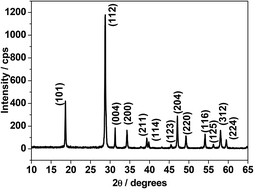Traditional salt-in-water electrolyte vs. water-in-salt electrolyte with binary metal oxide for symmetric supercapacitors: capacitive vs. faradaic
Abstract
The electrochemical energy storage of lithium and sodium ions from aqueous solutions in binary metal oxides is of great interest for renewable energy storage applications. Binary metal oxides are of interest for aqueous energy storage due to their better structural stability and electronic conductivity and tunability of redox potentials. They have also been widely studied as novel electrodes for supercapacitors. The interactions between water and lithium/sodium ions, and water and binary metal oxide surface determine the electrochemical reactions and their long-term stability. Our results indicate that the aqueous sodium electrolyte has a stronger influence on the capacitance and cycling stability of the binary (Ca and Mo) metal oxide electrode than its lithium cousin. The symmetric cell in a two-electrode configuration was assembled with the proposed binary metal oxide, which shows an average discharge voltage of 1.2 V, delivering a specific capacitance of 72 F g−1 at a specific energy density of 32 W h kg−1 based on the total mass of the active materials. The development of highly concentrated aqueous electrolytes such as the “water-in-salt” electrolyte showed a larger electrochemical (voltage) window with enhanced storage capacitance for increasing the salt concentrations has also been discussed.



 Please wait while we load your content...
Please wait while we load your content...